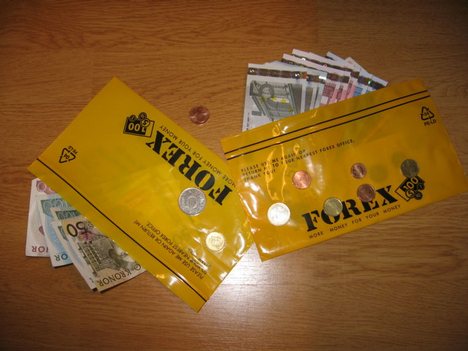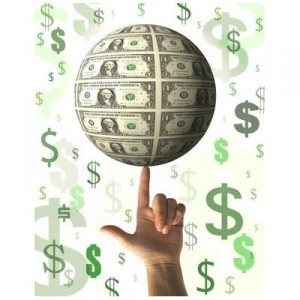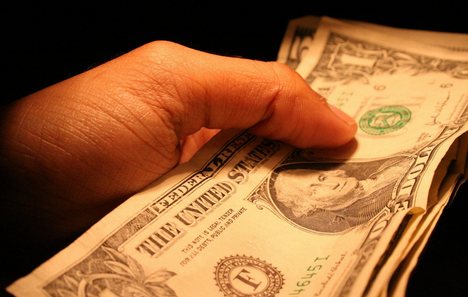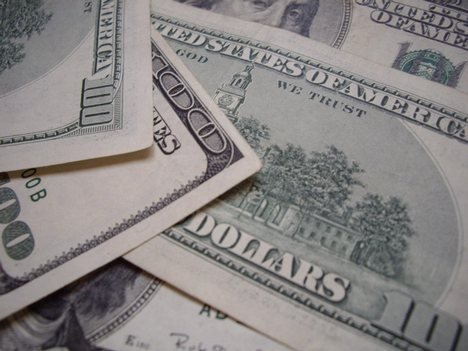
- Order:
- Duration: 6:00
- Published: 01 Jan 2007
- Uploaded: 06 Apr 2011
- Author: leveragefx





























































The $3.98 trillion break-down is as follows:
There is no unified or centrally cleared market for the majority of FX trades, and there is very little cross-border regulation. Due to the over-the-counter (OTC) nature of currency markets, there are rather a number of interconnected marketplaces, where different currencies instruments are traded. This implies that there is not a single exchange rate but rather a number of different rates (prices), depending on what bank or market maker is trading, and where it is. In practice the rates are often very close, otherwise they could be exploited by arbitrageurs instantaneously. Due to London's dominance in the market, a particular currency's quoted price is usually the London market price. A joint venture of the Chicago Mercantile Exchange and Reuters, called Fxmarketspace opened in 2007 and aspired but failed to the role of a central market clearing mechanism.
The main trading center is London, but New York, Tokyo, Hong Kong and Singapore are all important centers as well. Banks throughout the world participate. Currency trading happens continuously throughout the day; as the Asian trading session ends, the European session begins, followed by the North American session and then back to the Asian session, excluding weekends.
Fluctuations in exchange rates are usually caused by actual monetary flows as well as by expectations of changes in monetary flows caused by changes in gross domestic product (GDP) growth, inflation (purchasing power parity theory), interest rates (interest rate parity, Domestic Fisher effect, International Fisher effect), budget and trade deficits or surpluses, large cross-border M&A; deals and other macroeconomic conditions. Major news is released publicly, often on scheduled dates, so many people have access to the same news at the same time. However, the large banks have an important advantage; they can see their customers' order flow.
Currencies are traded against one another. Each currency pair thus constitutes an individual trading product and is traditionally noted XXXYYY or XXX/YYY, where XXX and YYY are the ISO 4217 international three-letter code of the currencies involved. The first currency (XXX) is the base currency that is quoted relative to the second currency (YYY), called the counter currency (or quote currency). For instance, the quotation EURUSD (EUR/USD) 1.5465 is the price of the euro expressed in US dollars, meaning 1 euro = 1.5465 dollars. The market convention is to quote most exchange rates against the USD with the US dollar as the base currency (eg USDJPY, USDCAD, USDCHF). The exceptions are the British pound (GBP), Australian dollar (AUD), the New Zealand dollar (NZD) and the euro (EUR) where the USD is the counter currency (eg GBPUSD, AUDUSD, NZDUSD, EURUSD).
The factors affecting XXX will affect both XXXYYY and XXXZZZ. This causes positive currency correlation between XXXYYY and XXXZZZ.
On the spot market, according to the 2010 Triennial Survey, the most heavily traded bilateral currency pairs were:
Trading in the euro has grown considerably since the currency's creation in January 1999, and how long the foreign exchange market will remain dollar-centered is open to debate. Until recently, trading the euro versus a non-European currency ZZZ would have usually involved two trades: EURUSD and USDZZZ. The exception to this is EURJPY, which is an established traded currency pair in the interbank spot market. As the dollar's value has eroded during 2008, interest in using the euro as reference currency for prices in commodities (such as oil), as well as a larger component of foreign reserves by banks, has increased dramatically. Transactions in the currencies of commodity-producing countries, such as AUD, NZD, CAD, have also increased.
:(a) International parity conditions: Relative Purchasing Power Parity, interest rate parity, Domestic Fisher effect, International Fisher effect. Though to some extent the above theories provide logical explanation for the fluctuations in exchange rates, yet these theories falter as they are based on challengeable assumptions [e.g., free flow of goods, services and capital] which seldom hold true in the real world.
:(b) Balance of payments model (see exchange rate): This model, however, focuses largely on tradable goods and services, ignoring the increasing role of global capital flows. It failed to provide any explanation for continuous appreciation of dollar during 1980s and most part of 1990s in face of soaring US current account deficit.
:(c) Asset market model (see exchange rate): views currencies as an important asset class for constructing investment portfolios. Assets prices are influenced mostly by people’s willingness to hold the existing quantities of assets, which in turn depends on their expectations on the future worth of these assets. The asset market model of exchange rate determination states that “the exchange rate between two currencies represents the price that just balances the relative supplies of, and demand for, assets denominated in those currencies.”
None of the models developed so far succeed to explain FX rates levels and volatility in the longer time frames. For shorter time frames (less than a few days) algorithm can be devised to predict prices. Large and small institutions and professional individual traders have made consistent profits from it. It is understood from above models that many macroeconomic factors affect the exchange rates and in the end currency prices are a result of dual forces of demand and supply. The world's currency markets can be viewed as a huge melting pot: in a large and ever-changing mix of current events, supply and demand factors are constantly shifting, and the price of one currency in relation to another shifts accordingly. No other market encompasses (and distills) as much of what is going on in the world at any given time as foreign exchange.
Supply and demand for any given currency, and thus its value, are not influenced by any single element, but rather by several. These elements generally fall into three categories: economic factors, political conditions and market psychology.
All exchange rates are susceptible to political instability and anticipations about the new ruling party. Political upheaval and instability can have a negative impact on a nation's economy. For example, destabilization of coalition governments in Pakistan and Thailand can negatively affect the value of their currencies. Similarly, in a country experiencing financial difficulties, the rise of a political faction that is perceived to be fiscally responsible can have the opposite effect. Also, events in one country in a region may spur positive/negative interest in a neighboring country and, in the process, affect its currency.
Large hedge funds and other well capitalized "position traders" are the main professional speculators. According to some economists, individual traders could act as "noise traders" and have a more destabilizing role than larger and better informed actors.
Currency speculation is considered a highly suspect activity in many countries. While investment in traditional financial instruments like bonds or stocks often is considered to contribute positively to economic growth by providing capital, currency speculation does not; according to this view, it is simply gambling that often interferes with economic policy. For example, in 1992, currency speculation forced the Central Bank of Sweden to raise interest rates for a few days to 500% per annum, and later to devalue the krona. Former Malaysian Prime Minister Mahathir Mohamad is one well known proponent of this view. He blamed the devaluation of the Malaysian ringgit in 1997 on George Soros and other speculators.
Gregory J. Millman reports on an opposing view, comparing speculators to "vigilantes" who simply help "enforce" international agreements and anticipate the effects of basic economic "laws" in order to profit.
In this view, countries may develop unsustainable financial bubbles or otherwise mishandle their national economies, and foreign exchange speculators made the inevitable collapse happen sooner. A relatively quick collapse might even be preferable to continued economic mishandling, followed by an eventual, larger, collapse. Mahathir Mohamad and other critics of speculation are viewed as trying to deflect the blame from themselves for having caused the unsustainable economic conditions.
In the context of the forex market, traders liquidate their positions in various currencies to take up positions in safe haven currencies, such as the US Dollar. Sometimes, the choice of a safe haven currency is more of a choice based on prevailing sentiments rather than one of economic statistics. An example would be the Financial Crisis of 2008. The value of equities across world fell while the US Dollar strengthened (see Fig.1). This happened despite the strong focus of the crisis in the USA.
This text is licensed under the Creative Commons CC-BY-SA License. This text was originally published on Wikipedia and was developed by the Wikipedia community.